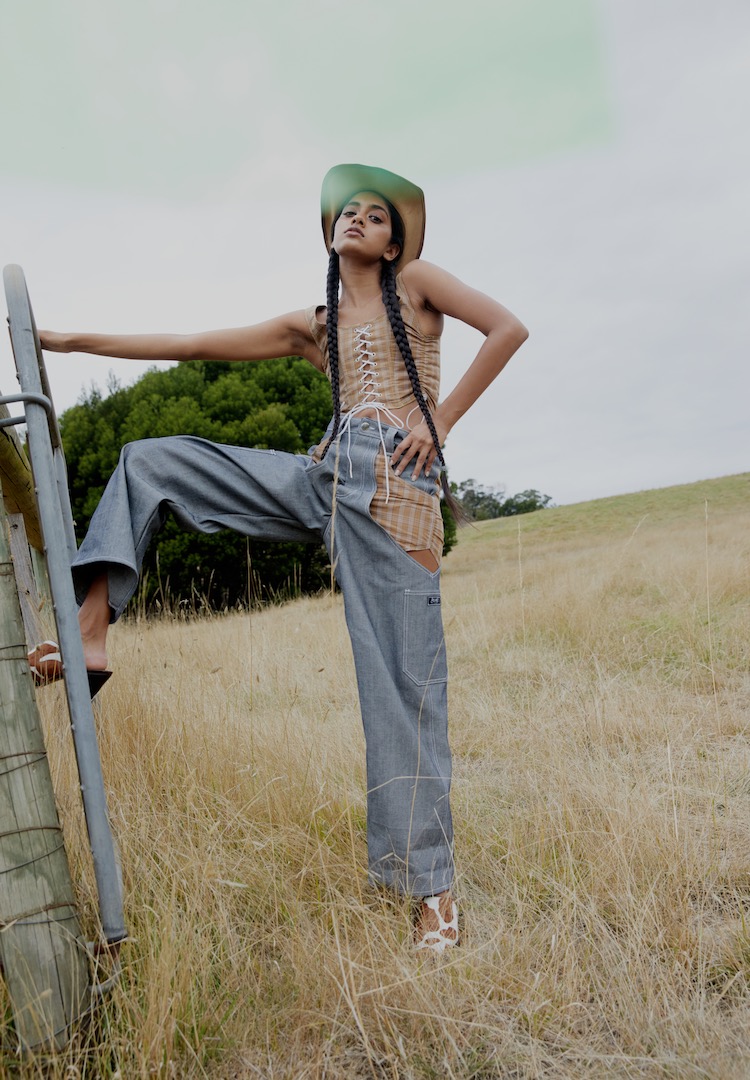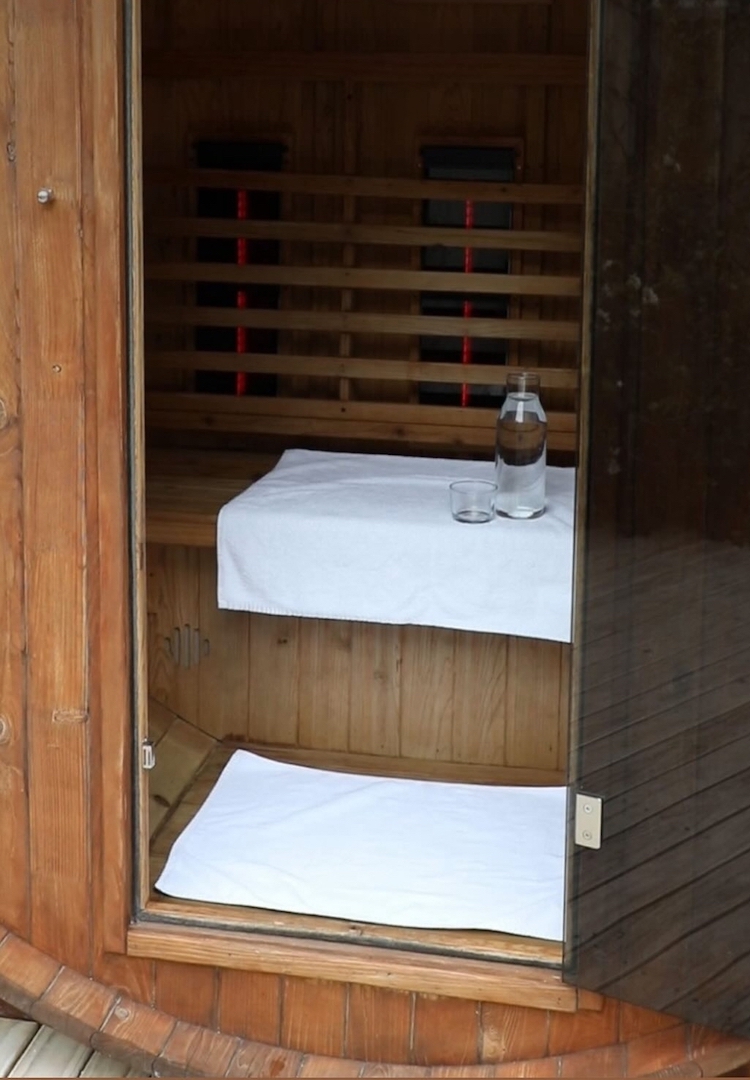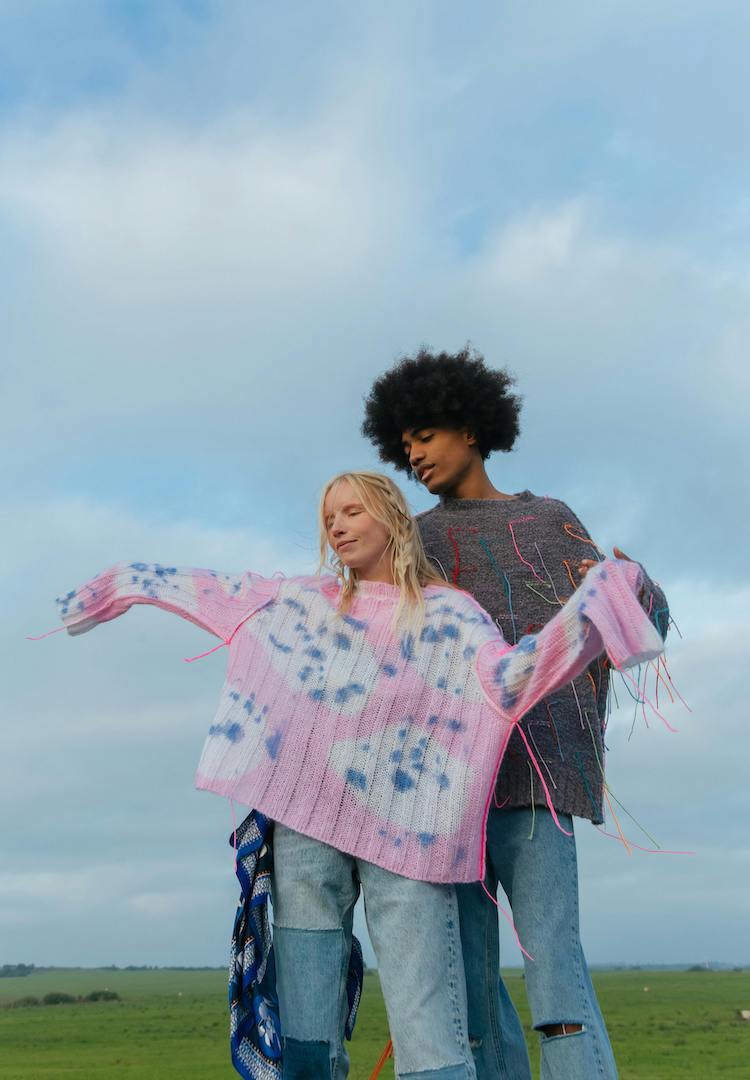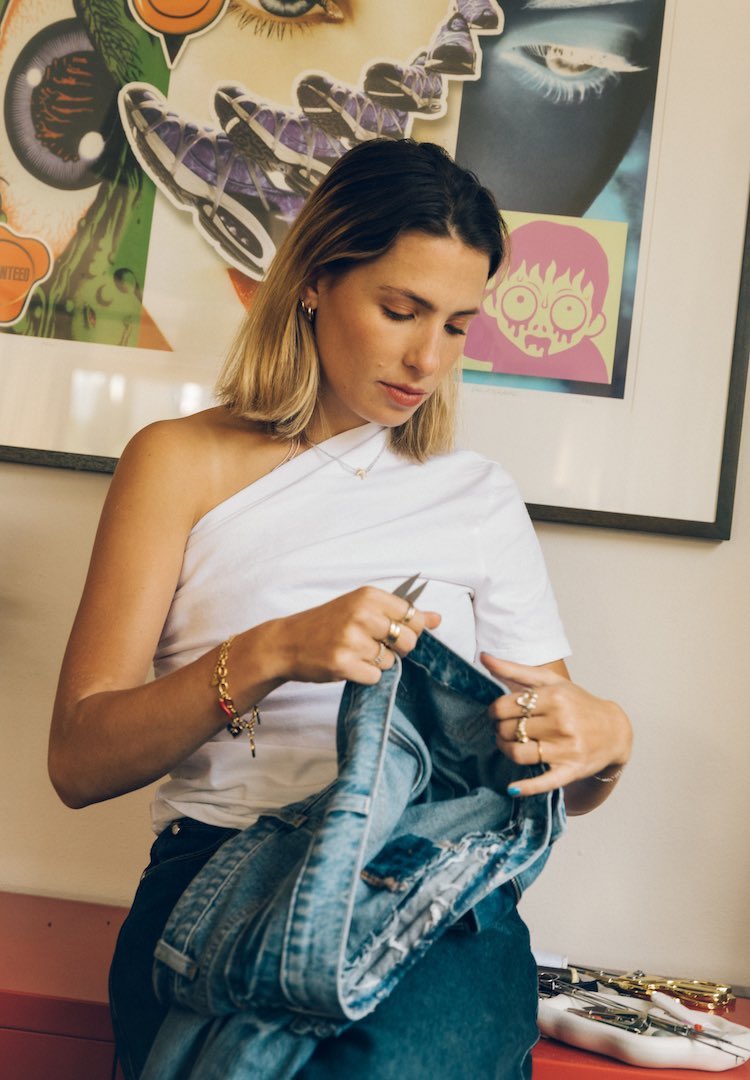What is ‘enclothed cognition’ and can it improve my mood and productivity?
IMAGE VIA @COREPRET/INSTAGRAM
WORDS BY RUBY STALEY
Clothes as therapy.
Thanks to the pandemic, I’ve become accustomed to wearing my pyjamas for days on end. And now that working from home is a constant for me (and winter has arrived) some days I don’t even get out of bed to do my work.
But I’ve realised when I take the time to get dressed in the mornings – even though I probably won’t physically see anyone – I usually feel more motivated and, in turn, more productive than if I stay in the same set of crusty PJs all day.
For more fashion news, shoots and features, head to our Fashion section.
Likewise, if I’m having a crappy day (like spending my twenty-third birthday in Melbourne’s fourth lockdown) and I put together an outfit that I feel great in, my mood and productivity levels usually noticeably rise.
Although it’s not a one-stop solution to feeling better, I know I’m not alone in reaping the mood-enhancing benefits of dressing up, as many of us continued to string together outfits and put on skincare and makeup during last year’s lockdown.
This phenomenon is connected to the psychological theory that clothes have the power to impact our mood. Coined ‘enclothed cognition’, this concept speaks to the clothes we choose to wear influencing the way we feel, behave and see the world.
What is enclothed cognition?
In a study conducted by researchers Hajo Adam and Adam D Galinsky, the intersection of attitude and clothing was analysed by exploring both “the symbolic meaning of the clothes” to the wearer and “the physical experience of wearing them”.
During the experiment, researchers found that wearing a piece of clothing associated with a job the wearer perceived as being high-intensity, which in this case was a doctor’s coat, increased the participant’s attention on an awareness test.
However, this outcome only occurred when the wearer associated the piece of clothing with a job they perceived as being of high importance or status. Contrastingly, when the participants were told the coat was an artist’s smock, their attention levels stayed the same.
From this study, Adam and Galinsky made a case that clothing does have the potential to impact mood and performance. However, psychotherapist, clinical counsellor and director of Rough Patch Affordable Counselling, Amber Rules, explained that in practice, enclothed cognition is a bit more nuanced than that.
“We could extrapolate from this research that what we associate an article of clothing with has an impact on our psychology. An example might be buying designer label clothing: we associate designer clothes with status and wealth, so wearing those clothes will have a specific psychological effect,” she said.
Similarly, according to Amber, there’s also research to suggest wearing athletic wear makes us more likely to exercise, brightly coloured clothes can improve mood, and formal clothing can make us feel more authoritative and powerful.
“This is really fascinating, because humans invented clothing and their associated meanings, but now it has become such an integral part of our collective psyche that what we wear and how we look can influence our psychological functioning for better or worse,” she explained.
Can we harness enclothed cognition to control our moods?
Using Adam and Galinsky’s theory as a springboard, fashion psychology researcher and professor at New York’s Fashion Institute of Technology Dr Dawnn Karen believes, “through our clothing, we can actually have a sense of control”.
Described by The Times as “the world’s first fashion psychologist”, Dr Karen broke new ground in her specific field and devised her own theories and treatments building on the original enclothed cognition theory.
Working with clients, students, and case studies, Dr Karen found there were three behavioural concepts she kept coming back to when researching the intersection between mood and fashion.
Naming the concepts ‘mood illustration dress’, ‘mood enhancement dress’ and ‘repetitious wardrobe complex’, Dr Karen said she often prescribes these behaviours to her clients.
“Mood illustration dress is dressing to perpetuate your current mood, mood enhancement dress is dressing to optimise your current mood, and repetitious wardrobe complex is where you wear the same outfit or aesthetic daily to maintain your mood so you can increase productivity à la Silicon Valley types,” she said.
After a personal experience with trauma, Dr Karen didn’t feel like opening up and being close to others. But she realised that getting dressed for herself in the morning made her feel significantly better and improved her quality of life. As a result, she created these concepts.
“I realised that I didn’t want to talk, I didn’t feel loquacious. It dawned on me, I think I should dress up because when I did, I felt better. I wondered if there were other people who don’t want to talk and want to dress to express themselves, so I came up with mood enhancement dress.”
Since then, she’s undergone years of research and continues to prescribe it to herself, her students and clients to assist with mental illnesses.
“I’ve even prescribed one client who suffers from depression to wear the colour yellow. I know it sounds insane to write a prescription for the colour yellow, but it worked and she recorded an enhancement in her mood.”
What’s the impact of the pandemic on these theories?
Of her three psychological theories of dressing, Dr Karen said they’ve even become more prevalent thanks to the pandemic.
“We have a lack of control of the world around us. So, what we can we control – emotions, clothing, relationship with self – [is important and] you can use your clothing as a healing modality,” she explained.
“Sometimes, I would catch myself having anxiety and trepidation due to the uncertainty of the pandemic so mood enhancement dress really helped to uplift the mood.”
While actually getting out of bed is a good first step towards positivity and productivity, Dr Karen believes the best way to harness mood enhancement dressing is to have a mindful morning first.
“First step, lie in bed and do a self-check-in and before you go to your closet, determine how you are feeling and how you want to feel. Do you want to stay in your feelings and wear leggings and a big comfy sweater, or do you want to feel chipper so maybe wear yellow or leopard print?
“Self-reflecting before you chose your clothes comes back to the idea of styling from the inside out – aligning the attitude with the attire – which is a motto I live and teach by.”
While dressing great isn’t by any means a solution to the current worldwide pandemic (I wish it was!), Amber said having missed a lot of opportunities to do these things due to COVID, it might feel even better than usual to dress up.
“People who missed the performative element of fashion – that is, the act of dressing up to feel good in relation to other people – will probably have sorely missed getting to dress up,” she said.
“As much as we might get dressed primarily to make ourselves feel good or [to] please our personal sense of style, I also think it’s pretty unlikely people were getting up every day, getting completely dressed up, doing a full beat… there’s an element of dressing that helps us do several things, including fit in with others, or garner compliments and connection.”
Does it always work?
Although she has found it to be helpful to many of her clients, Dr Karen said her theories are not a one size fits all solution. “I have to work with a client and see what they can handle because it’s all about creating an alignment between your attitude and your attire,” she said.
“Once you create an alignment, then you achieve this authenticity and you’re not doing it for some other extraneous circumstance, instead you’re in touch with yourself and choosing things based on how you feel and what suits you.”
Although the impact clothing has on our mood, behaviour and productivity is interesting to consider, Amber warns we shouldn’t put too much pressure on our clothing to fix us completely.
“It’s really important to remember that self-expression through clothing and appearance is fun and playful,” she said.
“If it feels like pressure to look a certain way in order to fit in or because you rely solely on the way you look to feel self-esteem, it becomes punishing and unhelpful. As long as it’s fun, utilise fashion and appearance in whatever ways feel good for you.”
To learn more about the power of clothing, try this.













